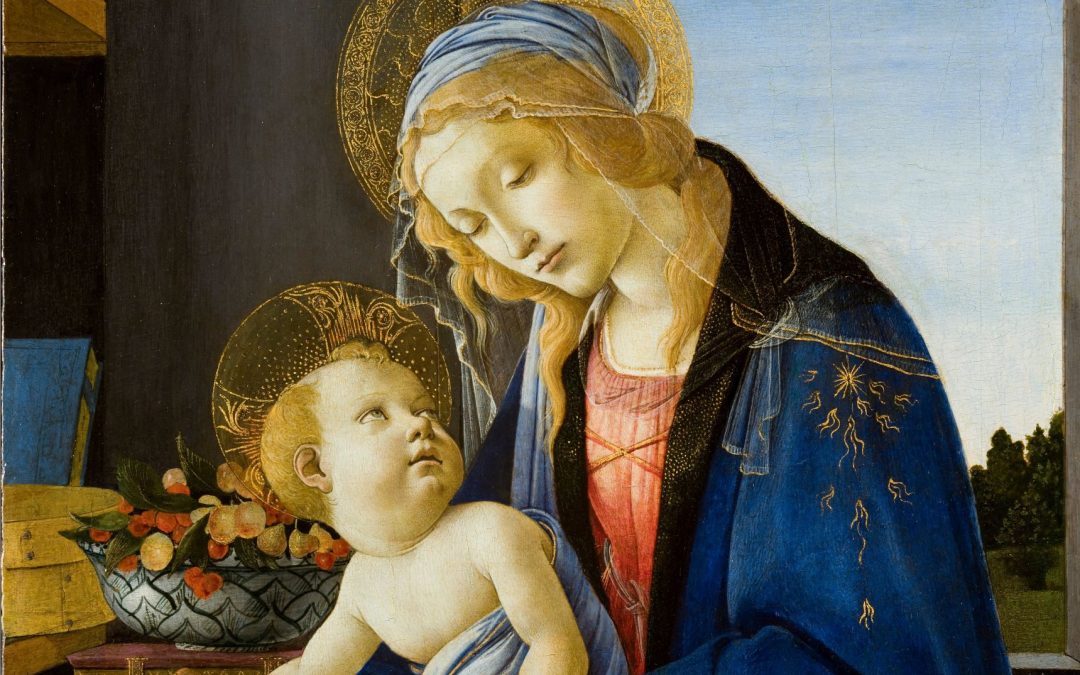Prior to joining the St. Philip Institute team and moving to the Diocese of Tyler, I was living in Tallahassee, Florida, pursuing a PhD in religious studies at Florida State University. Doing coursework in religious studies rather than theology proper was a bit of an adjustment for me, and there were some aspects of it that I didn’t really understand that well or particularly enjoy. However, I always kept my eye out for things that would come in handy in the future or that might be useful in trying to reach out to Catholics from a different background.
In one course, I was studying Islamic family ethics and we were asked to read a book written about the relationship between Catholics and Muslims, particularly on their understanding of the role of women and the idea of the family. The author made an interesting point that Mary is often held out to be the model woman for all Catholics. That’s simple enough, but she went on to claim that this can make life very challenging for Catholics, especially women, because Mary was a totally unique person in that she was preserved from original sin before her birth by the merits of Christ, she would go on to live a totally sinless life, and she furthermore was both a virgin and a mother. Talk about a tough model to follow!
It strikes me that as we consider the role of Mary and her importance in the life of ordinary Catholics, sometimes the dogmas about Mary can make it seem very hard to relate to her. For instance, the Church proclaimed that Mary is the theotokos, the Mother of God, in the year 431 at the Council of Ephesus. This is something all Catholics should profess, but it may be challenging to understand how that can apply to our own lives. The same can be said of most of the Marian doctrines and dogmas.
Perhaps we need a new way to look at Mary, one which can help ordinary Catholics better grasp how we can model our lives after our Blessed Mother even if we’re weak, sinful people and not the immaculately conceived spouses of the Holy Spirit.
So what would this new vision of Mary look like? Perhaps a good way of understanding Mary is to see her as the perfect disciple. Not all Catholics or people will be mothers, or virgins, or sinless, but we are all called to be disciples. In that way, we can take something about Mary that is truly universal, and root our understanding of her in the idea of discipleship. Actually, it’s not a new idea, as we see this very idea, namely Mary as the model disciple, on display in the New Testament. In the synoptic Gospels, we see three accounts of Jesus teaching the crowds when he hears that his mother and other family are nearby and wish to speak with him. In each case, Jesus makes an important distinction between mere human relatives and those who hear the word of God and act on it. The point of this episode is to emphasize that, from Christ’s perspective, hearing God’s word and doing God’s will are actually more indicative of who belongs to Jesus’ family. Thus, while his mother is undoubtedly important simply because she gave birth to Jesus, raised him, fed him, etc., this is all somewhat secondary to the fact that Mary cooperates with God’s will. Indeed it is because Mary is open to God’s will that she consented to become the theotokos, the Mother of the Lord.
Jesus’ message to the crowds around him was that his ultimate criterion for communion with him was fidelity to the divine will. And according to this criterion, Mary is the perfect disciple. We see this play out throughout the Gospels. Mary is the one who entrusts the master of ceremonies at the wedding party in Cana to Jesus in their time of need. Her advice: Do whatever he tells you. That’s discipleship plain and simple: Do what Jesus tells you! Even at trying moments, for instance when Mary is told by Simeon of the sword that will pierce her heart, she doesn’t ignore it or question God’s will. Instead, she kept all these mysteries and pondered them in her heart. Mary’s fidelity to the Lord, her closeness to the divine will, allows her to maintain her faith even in the midst of trial and suffering. She is at the cross, when nearly everyone else has abandoned Jesus. It is there where we see her divine motherhood being given to the rest of the Church. This supernatural, spiritual motherhood comes about again, not because Jesus was merely the Mother of the Lord, but because she was, above all, a disciple.
Her role as the mother of all disciples, or as the perfect disciple, is seen even after the Resurrection. At Pentecost, the apostles gathered together in prayer and who is there with them? Mary!
To be clear, this view of Mary as the model of discipleship doesn’t devalue any of the traditional Marian doctrines. But it puts them in a different context. Mary was, of course, gifted in a unique way by God because of her role in salvation history. But seeing her discipleship as the central key can help all of us better relate to Mary and better understand what it might look like to imitate her virtues.
Feature Image: Madonna of the Book by Sandro Botticelli, 1480.



